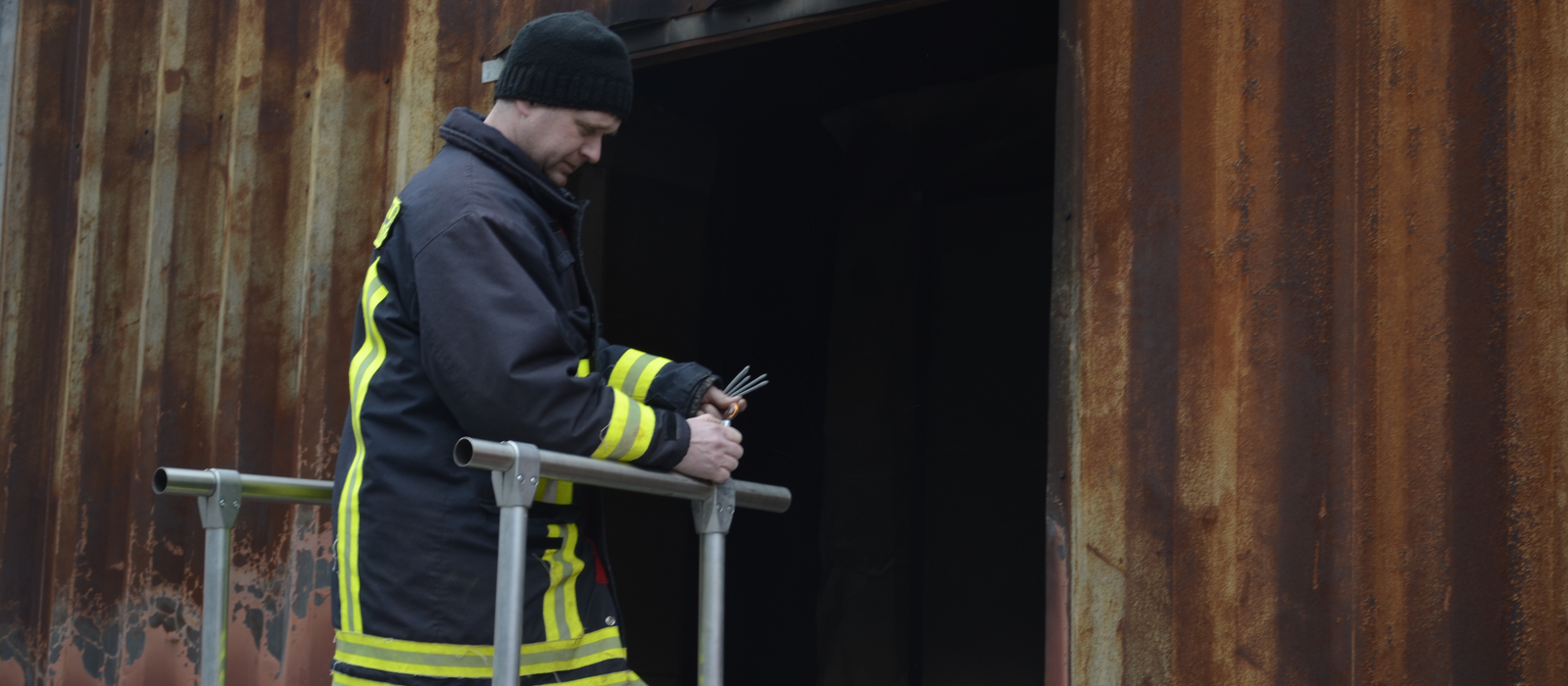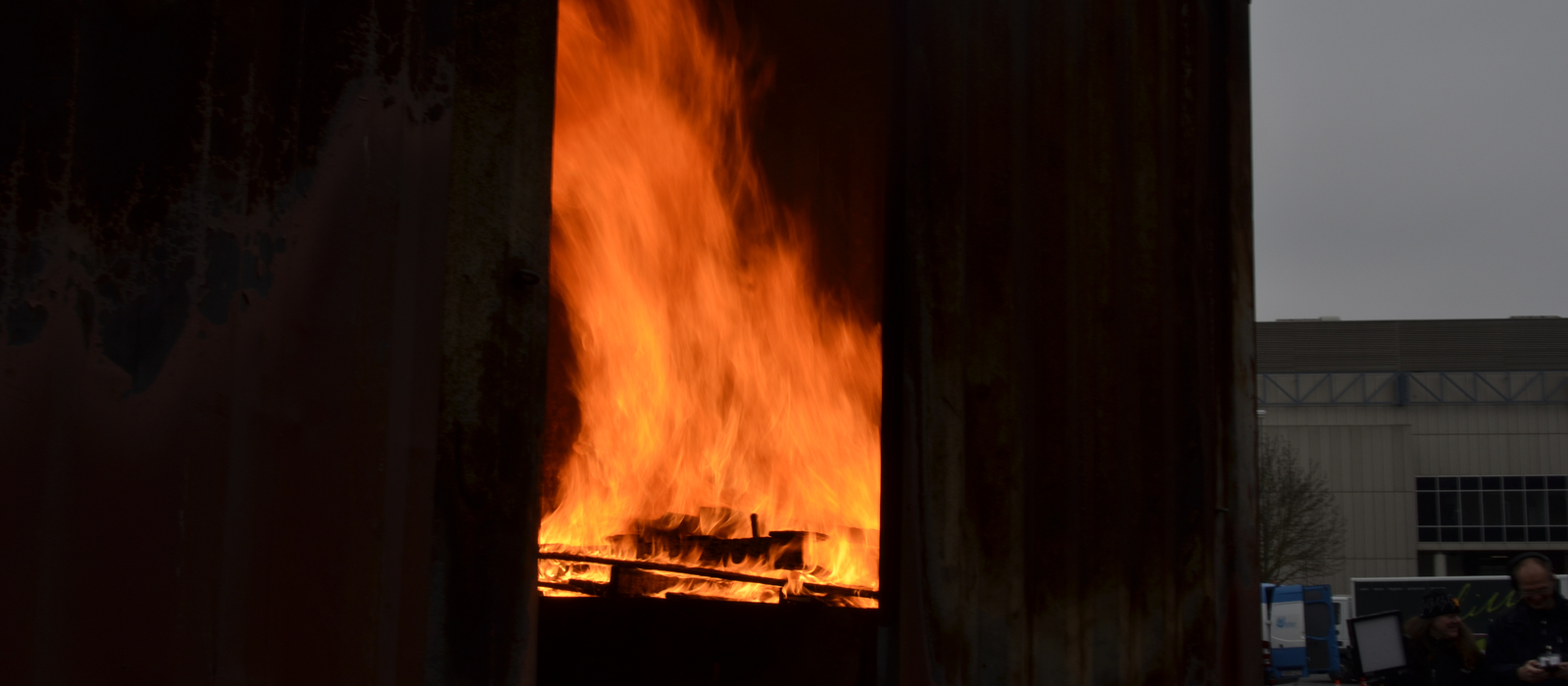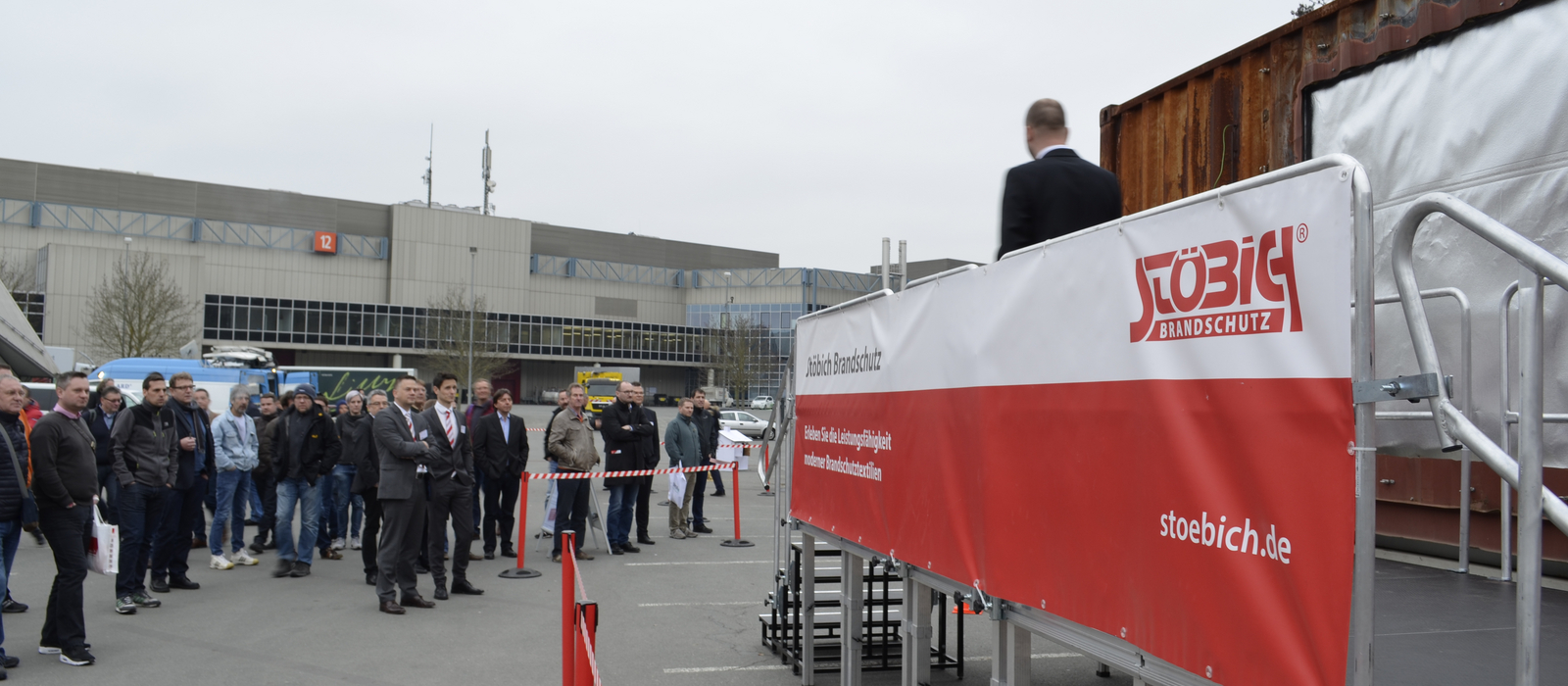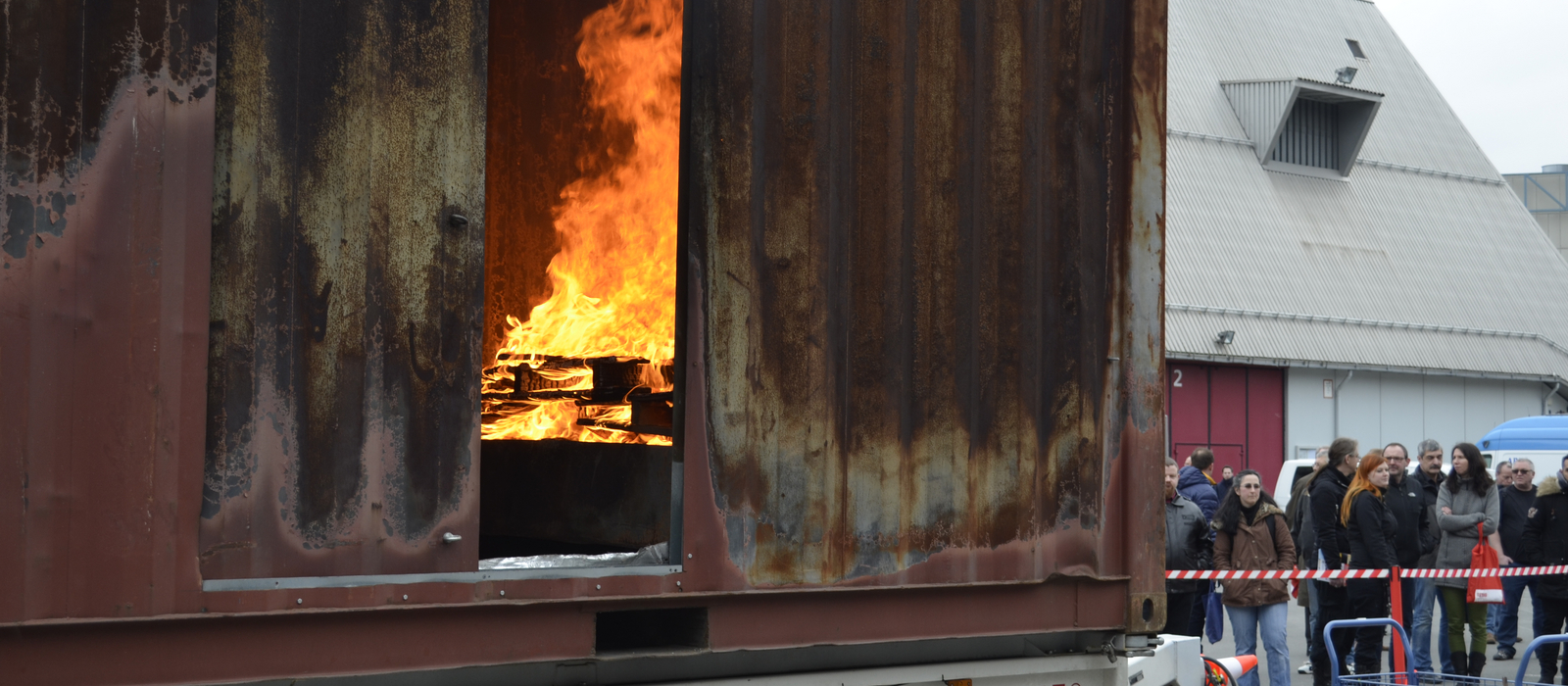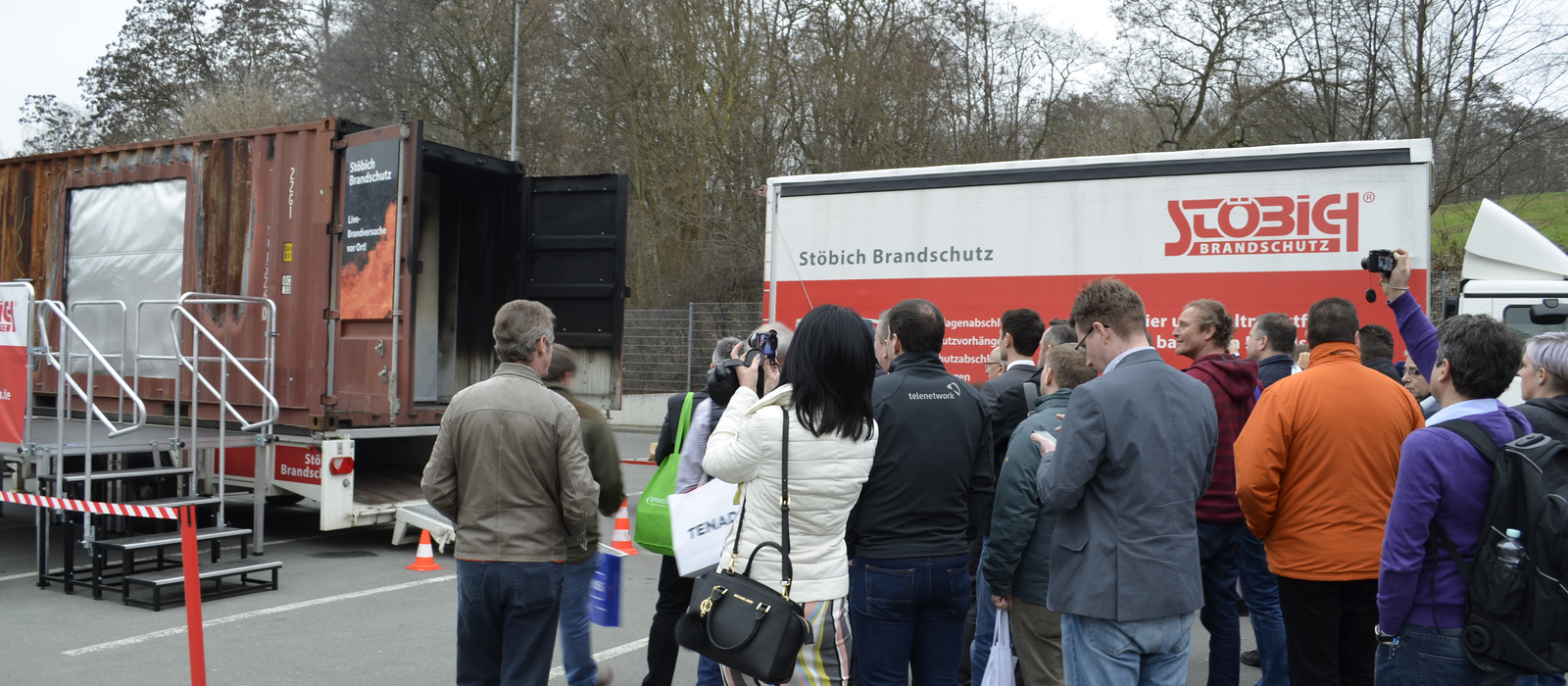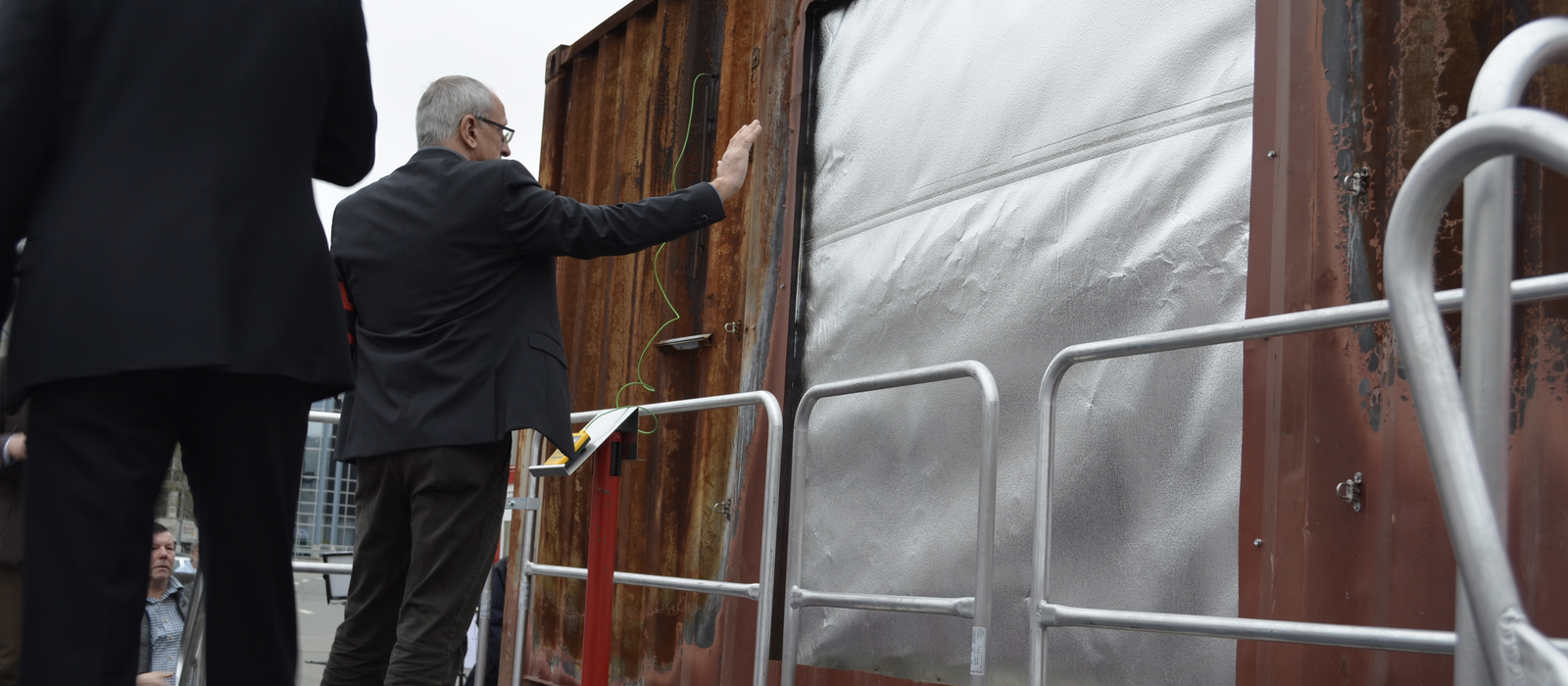
Experience textile fire protection at close quarters - free event
Live fire tests in Goslar
In addition to the events already held in our new training centre in Hamburg / Seevetal, Stöbich Brandschutz is also organising a Stöbich fire protection day at its headquarters in Goslar again this year. One highlight will be a live fire test to demonstrate the capability of textile fire protection.
Insights into our production process
Be our guest and take a look at our production process, from the sizing of the fabric with the world's largest portal sewing machine through to the metal sheet production facility at the site in Goslar.
Liability cases for planners, architects and installation companies
We are very pleased to welcome Mr Götz Winter, solicitor, to this event who will be giving an interesting talk about 'Liability cases for planners, architects and installation companies within the context of formal building laws and construction product liability laws'.
Application options for textile fire protection systems
We will of course be demonstrating the performance capability of modern textile fire protection systems and discussing their diverse application possibilities with you.

